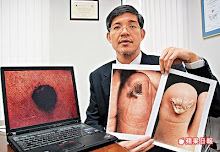
Managing Low Back Pain by Lisa Hill MD
All of us know someone who has suffered with low back pain; sometimes for a few days and sometimes for weeks. Low back pain is defined as soreness or discomfort anywhere in the lower back or buttocks. Three out of four people suffer from low back pain sometime in their lives.
You may wonder why back pain is so common and what causes it. Most often, back pain is caused by a muscle strain. This is the case more than 70% of the time with back pain. Muscle strains usually happen because you are using your back muscles to do something you don't usually do. Often people injure their backs by lifting furniture, playing sports, or gardening. Back pain may also be caused by a slipped (or herniated) disk. This generally happens when you are twisting while lifting. Disk degeneration, fractures of the spine, infection and cancer are other causes of back pain. Some back pain does not originate in the back.
It is a good idea to see your doctor for back pain if:
* Your pain was caused by an injury
* Your pain goes below your knee
* You have numbness in your leg, foot, groin, or rectal area
* You have fever, nausea or vomiting, abdominal pain, weakness or sweating
* You lose the control over going to the bathroom
* Your pain is too intense to move around or it wakens you at night
* Your pain doesn't improve after 2-3 weeks
Most studies show that back pain will resolve spontaneously in six weeks. However, relapses are common. With an acute episode of back pain, you may rest your back for 1-2 days after the pain begins. Resting longer than this can lead to weak muscles and a slower recovery. During recovery you should avoid heavy lifting, bending, twisting, and prolonged sitting.
Several different medications and therapies have been tried to help the person suffering with back pain to stay active. Because back pain is caused by injured, overused, or spasming muscles a majority of the time, therapies are generally aimed at treating this issue. Myo-Med is a non-toxic topical pain cream that may help manage the inflammation that often causes back pain. It may help heal injured muscles, aiding in quick recovery. Anti-inflammatory drugs (NSAIDS), muscle relaxants, and acetaminophen are also possibilities for pain management. Heat therapy has been found to be helpful in decreasing pain and increasing function in acute back pain. Spinal manipulative therapy may offer short term improvements in pain. Exercise therapy has not been shown to be helpful. There is insufficient evidence to recommend massage therapy, but it is considered safe.
About the Author
Dr. Hill is a practicing physician and mother.
Photo credit: http://paramountchiro.com




0 comments:
Post a Comment